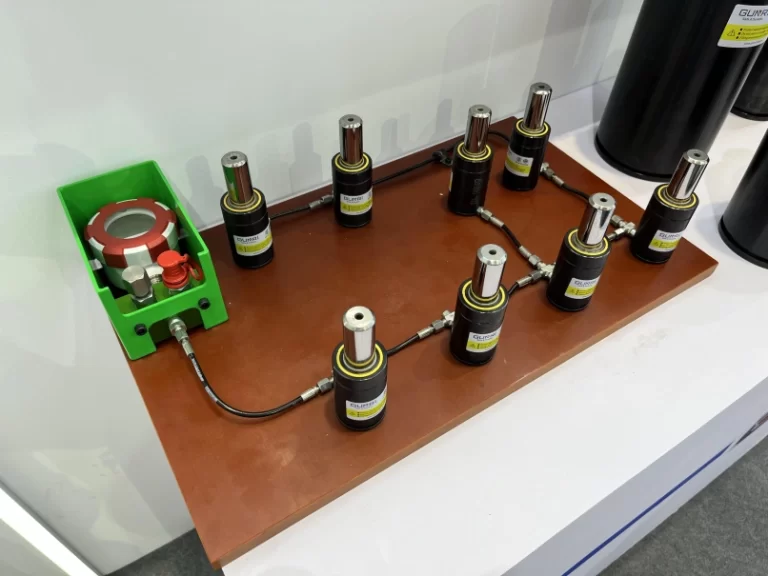Installation Guidelines for Mold-Specific Nitrogen Gas Springs
Table of Contents
- 1. Independent Usage: Streamlined Performance
- 2. System Integration: Expert Oversight
- 3. Protecting the Base: Bottom Screw Awareness
- 4. Optimal Stroke: Ensuring Precision
- 5. Alignment Matters: Piston Rod Orientation
- 6. Parallel Direction: Piston Motion Alignment
- 7. Controlled Return: Avoiding Internal Damage
- 8. Maintenance and Preservation: Gentle Care
- 9. Temperature Sensitivity: Mind the Heat
- 10. Storage Strategies: Shielding Against Corrosion
Mold-specific nitrogen gas springs are precision-engineered components designed to enhance efficiency and precision in mold applications. These high-pressure sealed products undergo rigorous testing before leaving the factory to ensure impeccable performance and leak-free operation. To harness their full potential and ensure safety, adhering to proper installation and usage practices is of paramount importance.
1. Independent Usage: Streamlined Performance
When utilizing mold-specific nitrogen gas springs as standalone components within molds, their installation simplifies usage. Once properly installed, there is generally no need for disassembly or maintenance within their designated lifespan. This guarantees streamlined performance and sustained reliability.
2. System Integration: Expert Oversight
In cases where nitrogen gas springs are integrated into larger systems, it is advisable to have trained personnel or professionals oversee the installation process. Crucially, avoid disassembling or attempting maintenance while nitrogen gas is present in the cylinder to prevent accidents and ensure operational integrity.
3. Protecting the Base: Bottom Screw Awareness
The screw at the lower end of mold-specific nitrogen gas springs serves multiple purposes, including protection and enhanced sealing. Under no circumstances should it be disassembled or struck, preserving its structural integrity and safety features.
4. Optimal Stroke: Ensuring Precision
For optimal performance, it is recommended that the working stroke remains at or below 0.9 times the manufacturing stroke (≤0.9XS). This stroke limitation ensures precise and controlled movement, contributing to the long-term functionality of the gas springs.
5. Alignment Matters: Piston Rod Orientation
To prevent off-center loads and maintain stability, the contact between the working base and the upper end of the piston rod should deviate by no more than 1° from perpendicular alignment to the piston rod’s axis. This alignment guarantees uniform stress distribution and prevents premature wear.
6. Parallel Direction: Piston Motion Alignment
The upper end of the piston rod’s working direction must align parallel to the motion direction of the piston rod. This alignment ensures optimal force transmission and enhances overall functionality.
7. Controlled Return: Avoiding Internal Damage
After compression, avoid allowing the piston rod to freely return. Unrestricted movement during this phase could lead to potential internal damage within the nitrogen gas spring. Controlled motion is key to ensuring the longevity of the component.
8. Maintenance and Preservation: Gentle Care
Maintain the cleanliness and integrity of the piston rod’s cylindrical surface. Exercise caution to prevent scratching, and strictly prohibit any form of striking or impact that could compromise the surface’s integrity.
9. Temperature Sensitivity: Mind the Heat
To prevent potential damage, avoid exposing nitrogen gas springs to direct sunlight or high-temperature environments. The recommended maximum temperature is +80°C, with exceptions for specially designed high-temperature-resistant nitrogen gas springs.
10. Storage Strategies: Shielding Against Corrosion
When not in use for extended periods after installation, store mold-specific nitrogen gas springs in a dry, well-ventilated environment, free from corrosive gases. Applying a protective layer of grease to the surface provides an additional defense against corrosion.
By diligently adhering to these installation guidelines, you can ensure the safety, reliability, and optimal performance of mold-specific nitrogen gas springs, thereby maximizing their utility and lifespan in mold applications.



